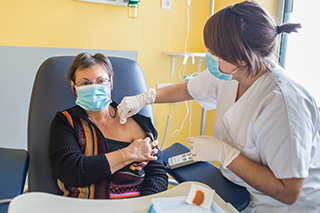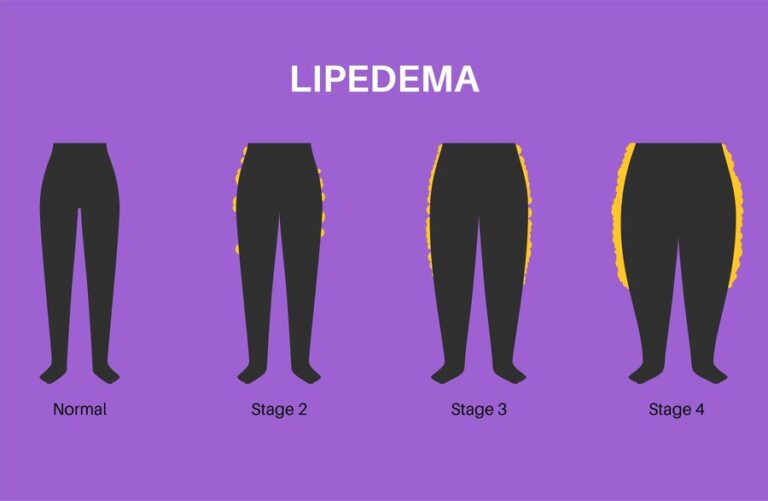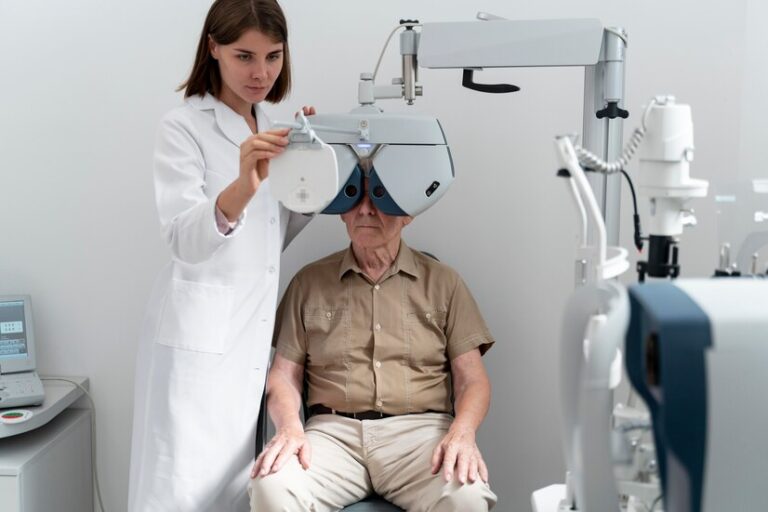Living with a Portacath: A Personal Journey
Imagine having to undergo regular medical treatments that require frequent access to your veins. The constant needle pricks and the search for a suitable vein can be both physically and emotionally exhausting. But what if there was a solution that could make this process easier and more convenient? Enter the portacath, a small device implanted beneath your skin that serves as a direct gateway to your bloodstream. In this blog post, we will explore everything you need to know about living with a portacath – from its insertion procedure and usage, to caring for it properly and addressing any potential problems along the way. Join us on this personal journey as we delve into the world of living with a portacath!
What is a portacath?
A portacath, short for “portable catheter,” is a small device that is implanted beneath the skin, typically in the chest area. It consists of two parts: a reservoir and a silicone tube called a catheter. The reservoir has a self-sealing septum that allows healthcare professionals to access your bloodstream easily.
The purpose of this nifty little device is to provide long-term access to veins for various medical treatments such as chemotherapy, blood transfusions, or intravenous medications. Unlike traditional IV lines where needles need to be inserted into different veins each time, the portacath eliminates the need for constant needle pricks by providing a stable and reliable entry point.
The portacath acts as an internal gateway directly into your bloodstream. Healthcare professionals can easily administer medications or draw blood samples without causing discomfort or damaging your veins with repeated punctures. This makes it particularly beneficial for individuals who require frequent medical interventions over an extended period of time.
Inserting a portacath
Inserting a portacath can be a significant step in the journey of individuals requiring long-term medical treatment. This procedure involves placing a small device under the skin, usually near the collarbone or groin area, that allows for easy access to veins. The insertion is typically done under local anesthesia and takes about an hour to complete.
During the insertion process, a surgeon makes a small incision and creates a pocket where the portacath will be placed. A catheter is then threaded through a vein into the desired location, while ensuring proper positioning using imaging techniques such as X-rays. Once in place, the portacath is secured and connected to both the catheter and an external reservoir.
Like any medical procedure, there are risks associated with inserting a portacath. These may include infection at the site of insertion or within the bloodstream, bleeding during or after placement, allergic reactions to anesthesia or materials used, damage to surrounding structures like nerves or blood vessels, and rare instances of pneumothorax (collapsed lung). It’s important to have open communication with your healthcare provider regarding these potential risks before undergoing this procedure.
Pain and risks associated with portacath insertion
The insertion of a portacath can be accompanied by some discomfort and risks. The procedure is typically performed under local anesthesia, but it is not uncommon to experience pain or soreness during the process. The level of pain varies from person to person, with some individuals reporting minimal discomfort while others may find it more challenging. It’s important to communicate any sensations you are feeling with your healthcare provider so they can address them appropriately.
Like any surgical procedure, there are potential risks associated with portacath insertion. These include infection at the site of insertion, bleeding, damage to surrounding blood vessels or organs, and allergic reactions to anesthesia or materials used in the device. While these complications are rare, it’s essential to be aware of them and seek prompt medical attention if you experience any concerning symptoms such as excessive bleeding, severe pain, fever, or signs of infection.
It’s crucial for patients considering a portacath to discuss the potential risks and benefits with their healthcare team before making a decision. By understanding these factors and being proactive in monitoring your own health after the procedure, you can minimize risks and ensure that your journey living with a portacath is as smooth as possible.
How is a portacath used?
A portacath, also known as a totally implantable venous access device (TIVAD), is a small medical device that is inserted under the skin to provide easy and convenient access to veins for various medical treatments. But how exactly is a portacath used?
Once the portacath has been implanted, it can be accessed using a special needle called a Huber needle. This needle is specifically designed to pierce through the silicone septum on top of the port and allow healthcare professionals to administer medication or draw blood without having to locate veins each time.
When accessing the portacath, healthcare providers use sterile techniques to prevent infections. They clean the area with antiseptic solution and wear gloves while performing any procedures involving the device. This ensures safety and reduces risks of complications.
Depending on individual needs, different medications or treatments can be administered through the portacath. Chemotherapy drugs for cancer treatment, long-term antibiotic therapy for infection management, or even regular blood transfusions can all be easily done through this device.
A portacath provides an efficient way for healthcare providers to deliver necessary medications and treatments directly into your bloodstream without repeatedly searching for accessible veins. It simplifies medical procedures and enhances patient comfort during treatment journeys.
Caring for a portacath
Caring for a portacath is an essential part of living with this medical device. Proper care can help prevent complications and ensure the longevity of the portacath. Here are some important tips for effectively caring for your portacath.
It’s crucial to keep the area around the portacath clean and sterile. This means regularly cleaning the site with antiseptic solution or as directed by your healthcare provider. It’s also important to avoid using any lotion or cream on or near the insertion site, as this can increase the risk of infection.
You should always be mindful of any signs of infection or other issues with your portacath. Keep an eye out for redness, swelling, pain, or discharge from the insertion site. If you notice any abnormalities or have concerns about your portacath, don’t hesitate to contact your healthcare provider.
Follow all guidelines provided by your healthcare team regarding flushing and maintaining patency of the catheter. Flushing helps prevent blockages and ensures that medications can be administered smoothly through the device.
Proper care is vital in ensuring that your portacath functions optimally throughout its lifespan. By staying vigilant and following these tips, you can actively contribute to maintaining good health while living with a portacath!
Possible problems with a portacath
Living with a portacath can be life-saving, but it’s not without its challenges. While the benefits of having a portacath are numerous, it’s important to be aware of the potential problems that may arise.
One possible problem is infection. Since a portacath involves an implanted device beneath the skin, there is always a risk of infection at the insertion site. This can cause redness, swelling, and pain around the area. It’s crucial to maintain good hygiene practices and keep the area clean to minimize this risk.
Blood clots can also occur with a portacath. These clots can potentially block or impede blood flow within the catheter or surrounding veins. Symptoms such as sudden swelling in the arm or leg should not be ignored and need immediate medical attention.
There is always a chance of mechanical complications with a portacath. The catheter could become dislodged or develop kinks over time, which may hinder proper functioning and require intervention from healthcare professionals.
While these potential problems should not discourage individuals from getting a portacath if medically necessary, being informed about them allows for proactive management and early detection if any issues arise while living with this device
Removing a portacath
Removing a portacath is typically a straightforward procedure that marks the end of a patient’s journey with this medical device. The removal process is usually less complicated than the insertion, and it can bring a sense of relief to those who have been living with a portacath for an extended period.
During the removal procedure, local anesthesia is administered to numb the area around the portacath. A small incision is then made over the device, allowing medical professionals to carefully disconnect and remove it from under the skin. Once removed, any remaining sutures are typically removed as well.
Afterwards, patients may experience some mild discomfort or tenderness at the site of extraction. However, this discomfort should subside relatively quickly. It’s important for individuals to follow their healthcare provider’s instructions regarding wound care and any necessary follow-up appointments after having their portacath removed.
Removing a portacath signifies progress in one’s medical journey and often brings about feelings of accomplishment and relief. It allows patients to move forward without carrying an external reminder of past treatments or conditions.
Benefits and advantages of using a portacath
Using a portacath can bring numerous benefits and advantages for individuals who require long-term medical treatments. Having a portacath allows for easy access to the bloodstream, eliminating the need for repeated needle sticks. This means that patients no longer have to endure the discomfort of frequent blood draws or IV insertions. Instead, healthcare providers can simply access the port with a special needle, making procedures much quicker and less painful.
Another advantage is that a properly functioning portacath reduces the risk of infection compared to other forms of intravenous access. The catheter is inserted under the skin, which minimizes exposure to external contaminants. Additionally, regular flushing and maintenance help prevent blockages in the device, ensuring optimal functionality.
Moreover, using a portacath provides greater freedom and mobility for patients undergoing treatment. Unlike traditional IV lines or PICC lines that are prone to snagging or dislodgment during daily activities, ports sit securely beneath the skin without any visible external hardware. This enables individuals to engage in physical activities such as swimming or exercising without worrying about accidental removal.
In conclusion (not allowed), having a portacath offers several key advantages including pain-free access for medical procedures, decreased infection risk through proper care and maintenance, as well as improved mobility and flexibility in everyday life
Personal experiences with a portacath
Living with a portacath can be an entirely different experience for each individual. Everyone has their own unique journey and set of challenges to navigate. Some people may find the presence of a portacath to be a constant reminder of their medical condition, while others see it as a lifeline that allows them to receive essential treatments.
For some, the insertion of a portacath may have been relatively simple and painless. However, others may have faced complications or discomfort during the procedure. The process can vary from person to person, but it’s important to remember that you are not alone in your experiences.
Using a portacath becomes part of your daily routine when you rely on it for medical purposes. It requires careful maintenance and attention to ensure its proper function and longevity. Adapting to this new way of life takes time, patience, and support from healthcare professionals who understand the unique needs associated with living with a portacath.
Each person’s journey with a portacath is filled with ups and downs. There might be moments where everything goes smoothly – no problems or issues whatsoever! But there could also be times when complications arise or adjustments need to be made along the way. Sharing these experiences can provide comfort and reassurance for those who are embarking on this path themselves.
Remember that everyone’s experience will differ because we are all individuals facing our own health challenges. If you’re feeling overwhelmed or uncertain about living with a portacath. Reach out for support from online communities or local organizations dedicated to supporting individuals in similar situations. They can offer advice, understanding, and companionship throughout your personal journey with a portacath
Resources and support for living with a portacath
One excellent resource is your healthcare team. They can provide invaluable guidance on caring for your portacath, managing any complications that may arise. And answering any questions or concerns you may have. Don’t hesitate to reach out to them whenever needed.
Another valuable source of support is the online community. Connecting with others who are also living with a portacath can offer comfort, understanding, and shared experiences. Online forums, social media groups, and patient advocacy organizations often provide platforms for connecting with fellow patients.
In addition, consider seeking emotional support from friends and family members who can offer a listening ear during difficult times. Their presence can make all the difference in helping you cope with the challenges that come along the way.
Educate yourself about your condition and treatment options through reputable sources such as medical websites or literature provided by healthcare professionals. The more knowledge you have about your own health situation. The better equipped you will be to advocate for yourself and make informed decisions regarding your care.
That everyone’s experience with a portacat’h is unique; what works for one person might not work for another. Take advantage of these resources but always trust your instincts and listen to your body when making decisions about how best to manage life with a portacat’h.
Living with a portacat’h may present its difficulties at times but being proactive in accessing. Resources and finding support networks will ensure that you never feel alone on this journey!







